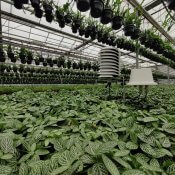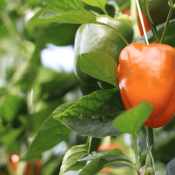Who are you giving your future (agri)data to?
Working in agri-technology, I come across this statistic quite often:
“IoT device installations in the agriculture world will increase to 75 million in 2020″
I’m happy to leave discussing the details of the precise projections to analysts, but the point remains: agriculture is digitizing. It’s digitizing at varying rates in various sectors and regions, but we can all agree that the arrow of digitization is pointed in one direction.
As growers of all sizes implement new technology to drive productivity, they may overlook the question of data ownership.*
*(Many, in our experience, do not. However, especially when deployments are small, and the data collected appears ‘small,’ it can be easily undervalued.)
“It’s just a few sensors, a couple of machines. I just want it to work and make my life easier.”
It’s never too early to start with good habits
It may not feel crucial in the early days, but as growers generate more and more data on their crops and environment (Business Insider estimates an average of around 4 million data points generated by farmers per day by 2034), they should consider the fate of their future agridata– who will own their data when there’s more of it, and it’s even more valuable.
Even small data is very powerful
When it comes to agridata, several 30MHz customer stories are testaments to the power of quality over quantity. Even a few strategically placed sensors, a few key metrics, can prevent product loss, save energy, save money on fertilizer or optimize irrigation strategy. Data doesn’t have to be “big” to drive innovation and help solve critical problems in agriculture.
Innovation should be (selectively) shareable
I don’t think it’s overly controversial to say that the solution to the world’s food and sustainability crises will be collaborative. No company or farm will solve these problems alone– the solution will likely be collaborative, interdisciplinary, and extremely dependent on a good exchange of data and insights. We know from our customers that the importance of crop monitoring does not end at cultivation. That’s why we make it so easy to share dashboards and widgets with real-time data within an organization, as well as with external stakeholders. Our API makes it easy to connect data sources, to ensure that the value of crop data is fully realised, farm to fork.
But:
Data ownership doesn’t need to be a ‘grey area’
As far as 30MHz is concerned, crop data is growers’ intellectual property. End of story. It should be easily shareable, but with full control in the hands of the grower. We’ve gotten our handful of compliments for our user interface and analytics, but we know there might be other things customer want to do with their data.
That’s their business.
We’ve made data export exceedingly simple: all it takes is a few clicks, and customers have their sensor data in .CSV
No grey area here.



30MHz is typing… Our extended support team is ready to chat!
At 30MHz we think it’s important that our users can use our platform in an optimal way. At times you may have questions and you would like some help from our support team. Email and our support page filled with helpful articles were your go to’s. But we thought it was time for something extra… ...Read more
New 30MHz connect casing: How we protect your tech
To make sure your dataflow is fully protected, 30MHz introduces a new connect casing: waterproof, dust proof and even resistant to hits. This special shield will last longer and ensure a reliable dataflow from the connected sensor. What does that full protection mean? That’s what we will explain in this article. Watertight: resistant to wetness ...Read more
Smart assistant at work
After the launch of the smart (AI) assistant at GreenTech, the first growers have started using this new feature. The assistant helps them gain insights from their data faster and supports daily decision-making in the greenhouse. Growers report that they use the assistant for: Calculating differences in water content throughout the day Quickly identifying trends ...Read more


